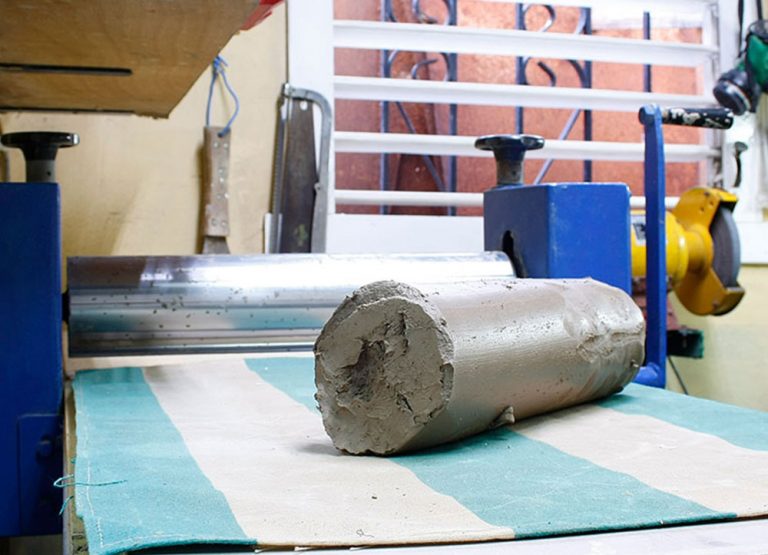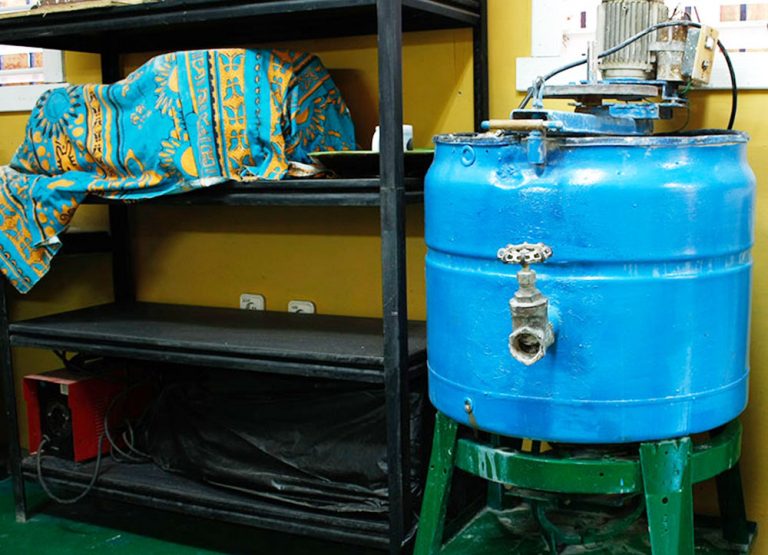TECHNIQUES AND PROCESSES - GENERAL:
Preparation of the clay body

The clay
In ceramics a lot of types of clays can be used. In my work I use white clay made of feldspar, gray kaolin, and red clay from the province of Pinar del Rio, to the northwest of the country.
This clay has a vitrification temperature of between 1040 C° and 1100 C°. It is gray-colored when wet and dry, but it acquires a light pink color when bisque fired (when burnt in the kiln).
The Compact Column
When the clay body acquires a consistency similar to shaping clay, we knead it by hand and afterwards we put it through an extruder. This machine gives homogeneity to the clay body, extracts the air from the mixture and makes it compact. Through its barrel, the clay is forced out as a firm column, what ceramists call in Spanish pella. From now on, our clay is ready for shaping.
This process of preparing the clay is done in large enough quantities to store for long periods, because it is important to let the clay body age, that’s to say, let it rest well covered in a humid place at least for a month before using it. The aging gives more plasticity and softness to the clay body, and prevents cracks and excessive stickiness during the shaping.


The Clay Body
With an iron mace we cut up the dry clay lumps, crumbling them into little pieces that we put in a small bucket, filling three quarters of it. We fill the last quarter with red clay also in small fragments. Then, we pour the content of the bucket into a beater or mixer, adding water little by little. The beater breaks the pieces with its blades and both materials begin to mix with water. When a more or less thick paste is formed, we put it through a sifter in order to eliminate any impurity.
This filtered mixture is placed in a plaster drying container that helps to extract the excess of water, and it is at that moment that we add the chamotte, which we mix by hand. From then on the mixture is ready; we let it rest, depending on the environmental moisture, for four or five days.
Chamotte (or grog) is the fired and crushed clay introduced in the form of grain to the clay body to give it hardness and avoid cracks during the drying process and the firing in the kiln. We add chamotte to the clay according to the size of the work to be made. If the sculpture has small or medium format, we add 15 to 20 % of chamotte in fine grain (0.5 to 1 mm). If it is a large format sculpture (bigger than 1 m) we would add from 25 to 40 % of chamotte ground in average grain (1.5 to 2 mm).
